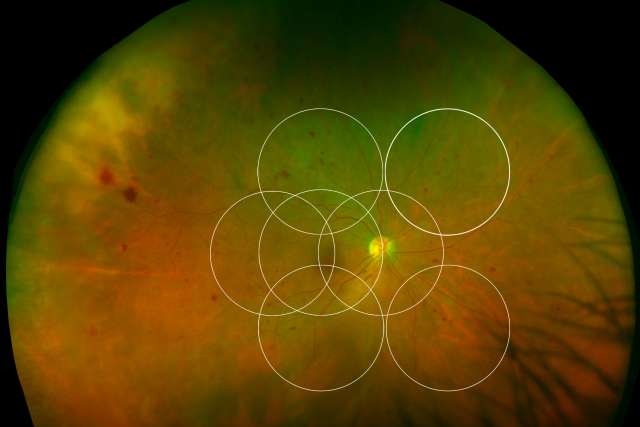Managing doctors’ appointments, lab tests and trips to the pharmacy can become overwhelming for people with diabetes. But UCLA Health physicians are attempting to ease the burden on patients and keep them healthier through a new program to screen for a complication of the disease, an eye disorder called diabetic retinopathy. Diabetic retinopathy is one of the most common complications of diabetes, and a leading cause of blindness, says Matthew Freeby, MD, director of the Gonda (Goldschmied) Diabetes Center and director of Diabetes Clinical Programs for UCLA Health. According to some studies, it affects 28.5% of diabetic patients age 40 years and older in the U.S. - about 4% of the entire U.S. population over age 40.
T h e A m e r i c a n Ac a d e my o f Ophthalmology recommends annual vision screening for people with diabetes. However, those visits sometimes fall through the cracks due to cost, access to care and other factors. An estimated one-half of people with diabetes do not get regular eye examinations.
“It is important for patients to get periodic eye screenings because that allows our doctors to assess for the risk of vision loss,” Dr. Freeby says. “If there is a risk, our ophthalmologists and specialists have tools to reduce the risk.”
To facilitate that regular screening, UCLA Health, with support of The Leslie and Susan Gonda (Goldschmied) Foundation, has expanded its use of retinal cameras in endocrinology and primary care clinics throughout the UCLA Health system to provide eye screenings to more patients. A retinal camera takes pictures of the interior of the eye; a patient sits at a desk and places an eye to a microscopetype device to record an image. The process is quick and painless, and it is covered by insurance. Patients with signs of retino p athy are referred for treatment. “We’ve placed cameras in primary care and endocrinology clinics with the goal of screening patients who are unable to see an eye doctor,” Dr. Freeby says. “They can undergo screening during a visit or stop by a clinic for an eye check.”
One retinal camera has been in use at the Gonda (Goldschmied) Diabetes Center for about a year, and five additional cameras are now in UCLA Primary Care Physicians in Westwood, Century City primary care, Torrance endocrinology, UCLA Health Westlake Village primary and specialty care and UCLA Health Porter Ranch. Patients have welcomed the screening, says Dianne Cheung, MD, a UCLA endocrinologist in Torrance.
“Patients have found it extremely convenient to come for their diabetes follow-up,” she says. “Within minutes after their office visit, we can walk to a room with the retinal camera and get their imaging done by our clinical staff without having to wait for an ophthalmologist or optometrist visit. We receive the results that day, often within hours, and I can then notify the patient if the exam was normal or if they need to see an ophthalmologist.”
“We want to catch diabetic eye disease early to provide treatment and prevent progression,” says Maria Han, MD, chief quality officer for the UCLA Department of Medicine. “The retinal camera screening program is a win across the board for our patients, providers and care teams. It comes down to being able to provide high-quality, high-value care in a convenient way.”
A preliminary review of the program suggests it will reduce cases of vision loss, Dr. Freeby says. “We want to catch diabetic eye disease early to provide treatment and prevent progression,” he adds. “Anecdotally, we’ve captured a number of people with diabetic eye disease. I’d like to think we’re helping to reduce vision loss.”


